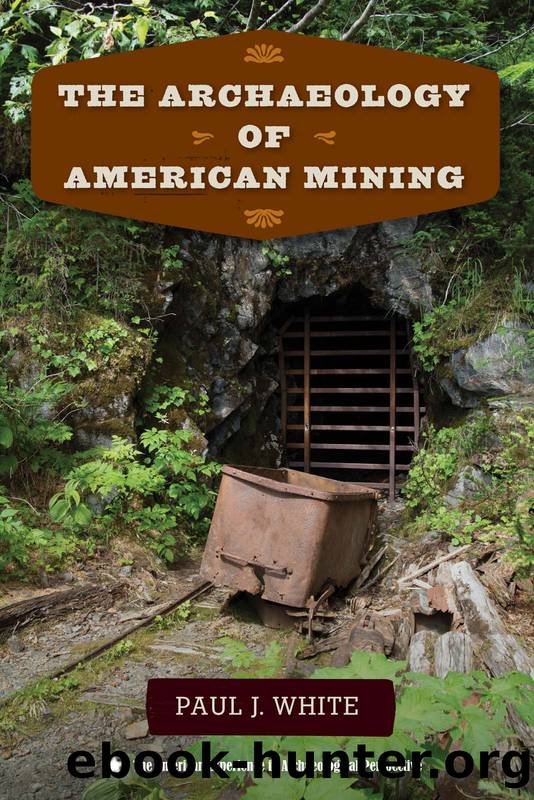The Archaeology of American Mining by White Paul J.;

Author:White, Paul J.;
Language: eng
Format: epub
Publisher: University Press of Florida
Published: 2019-10-23T00:00:00+00:00
Figure 4.5. Ludlow tent colony after the massacre on April 20, 1914. Photograph by Bain News Service. Library of Congress, Prints and Photographs Division, LC-DIGggbain-15859.
Archaeological investigations at Ludlow (Larkin and McGuire 2009; Reckner 2009; Saitta 2007) found surface evidence for approximately one-quarter of the strike campâs historical extent (Saitta 2007: 68â69). Residents had dug shallow ditches and berms around the perimeter wall of their tents, which revealed not only the gridded arrangement of the camp but also the location of specific tent sites. In addition to mapping the site, archaeologists sought to investigate how the strike situation influenced the expression of identity. Ludlowâs strikers had resettled from company camps where ethnic neighborhoods existed. Although oral histories collected decades after the massacre noted that people âall got along,â interviewers did not record the voices of Hispanic, Asian, and African American families also present during the strike. Paul Recknerâs (2009: 313â23) analysis of interview transcripts suggests that some social distance may have existed, given that whites tended to be identified by personal names and nonwhites by ethnic terms.
Recovered artifacts suggest the presence of several ethnic groups. Excavations at a tent site in the northwestern part of the colony, for instance, identified suspender buckles inscribed with âSociety of Tyrolean Alpinistsâ and a medicine bottle with embossed Italian writing that implies that the tent residents were Italian (Saitta 2007: 73). The recovery of a Knights of Pythias pin, among other fraternal pins recovered from excavations (Reckner 2009: 423â25), draws attention to the operation of multiple identities in the camp and, ultimately, suggests that even contradictory identities could reside within an individual. Had the pin belonged to Louis Tikas, a member of the fraternity killed during the massacre, he might have introduced himself to us variously as an American citizen and a Greek citizen, as a citizen who had been shot once before in the defense of citizensâ rights, as a miner who worked as a strikebreaker before becoming a labor organizer, and as a member of a union that espoused racial equality and a member of a fraternity that did not.
Download
This site does not store any files on its server. We only index and link to content provided by other sites. Please contact the content providers to delete copyright contents if any and email us, we'll remove relevant links or contents immediately.
Man-made Catastrophes and Risk Information Concealment by Dmitry Chernov & Didier Sornette(5755)
The Revenge of Geography: What the Map Tells Us About Coming Conflicts and the Battle Against Fate by Kaplan Robert D(3972)
Zero Waste Home by Bea Johnson(3683)
COSMOS by Carl Sagan(3412)
In a Sunburned Country by Bill Bryson(3404)
Good by S. Walden(3385)
The Fate of Rome: Climate, Disease, and the End of an Empire (The Princeton History of the Ancient World) by Kyle Harper(2918)
A Wilder Time by William E. Glassley(2730)
Camino Island by John Grisham(2728)
Organic Mushroom Farming and Mycoremediation by Tradd Cotter(2583)
The Ogre by Doug Scott(2543)
Human Dynamics Research in Smart and Connected Communities by Shih-Lung Shaw & Daniel Sui(2436)
Energy Myths and Realities by Vaclav Smil(2393)
The Traveler's Gift by Andy Andrews(2313)
9781803241661-PYTHON FOR ARCGIS PRO by Unknown(2281)
Inside the Middle East by Avi Melamed(2252)
Birds of New Guinea by Pratt Thane K.; Beehler Bruce M.; Anderton John C(2189)
A History of Warfare by John Keegan(2118)
Ultimate Navigation Manual by Lyle Brotherton(2065)
